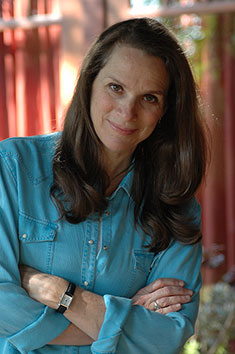Tabsh is not one for easy chitchat. His bedside manner is efficient. His right hand traces the surface of her abdomen with a transducer, a wand-like device that emits high-frequency sound waves that project an image of her baby on the video monitor before him. With his left hand, he punches buttons and knobs, simultaneously stepping on a floor pedal, eyes narrowed on the monitor's screen. Like a race-car driver, his body speaks of motion, swift and sure.
"There is a membrane between them, though it's thin," he says, assessing the placement of the fetuses while pointing to a blip of light on the screen. The picture resembles a satellite-transmitted weather map. At the same time that he attends to the patient, he is also training two residents and an attending physician, none of whom was able to do the procedure the day before because of the babies' positions in the uterus. Today, though, the babies have moved sufficiently to allow Tabsh to share his expertise with his colleagues.
"I'll tell you everything we're doing," he says to the woman, who, like some of the patients in his varied practices, has received no prenatal care during her pregnancy. Now, tears stream down her face, though she says nothing, as her abdomen knots up in a ball during another contraction. A nurse holds her hand. "You won't be surprised," Tabsh says. "Try to relax. You're doing fine."
Watching the ultrasound machine, he guides a needle into the woman's abdomen. "You'll feel a little pressure now," he says. Since one of the twins is floating, he must wait until it has stopped moving before he can extract amniotic fluid.
"It looks like strong, mature fluid," he says, eyeing the vial he's just filled from one twin's sac. His patient smiles. But lab tests won't be forthcoming for several hours. Explaining his every move, he shoots a blue-colored dye into the first twin's sac to distinguish which fetus is which. Then, he does a second tap, this time guiding the plastic-gloved hands of a resident, who is placing the needle into the other twin's sac.
As it turns out, the twins' lungs are mature. Although some doctors would have found the procedure unnecessary and simply allowed the woman's labor to continue, Tabsh reasons that he's seen too many preemies in the neonatal intensive care unit not to intervene this way. Two small, healthy babies are delivered that night.
But not all outcomes are so happy.
Back at his Northridge office, in a small building sandwiched between Northridge Community Hospital and a shopping center, Tabsh has a waiting room crammed with 12 patients waiting to see him for prenatal testing.
These patients are clearly nervous, flipping through magazines distractedly. Each is considered at risk of giving birth to an abnormal child, and many have been sent by a referring physician. Most have had simple blood tests to measure alpha-fetoprotein, or AFP, levels, yielding suspicious results. By California law, all patients less than 20 weeks pregnant must be offered the AFP test, and about half are choosing to have it.
AFP is a protein produced by the fetus. If the AFP level is too high, it raises the specter of neural-tube defects, such as spina bifida, in which the lower end of the spinal chord fails to close properly, or anencephaly--literally, "no brain." If AFP levels are low, there is a chance of a baby having Down's syndrome or other chromosomal anomalies. On the other hand, suspicious AFP results might mean nothing more than that estimated gestational dates are wrong, or that twins are to be expected.
Tabsh's follow-up examination--usually both ultrasound and amniocentesis--will confirm the suspicions or give these couples' babies clean bills of health. If all is well, they could return for periodic ultrasound checkups; if it's the bad news, they will be asked to make a choice--terminate or continue the pregnancy.
Although most women agree to undergo prenatal testing, they do so believing that they will be reassured. And 98% of the time, they are right. But when problems are detected, couples are often unprepared to decide.
One of the women in the waiting room is a petite 20-year-old, the youngest patient here. She is 18 weeks pregnant. When Tabsh turns on his white ACUSON model 128 real-time ultrasound machine to examine her, he winces. He immediately sees that there is no amniotic fluid around the baby. Cautiously, he tells her that there is a problem, even though she can see her baby kicking and waving on the screen. Soon, he realizes that the patient is leaking amniotic fluid. He asks her to meet him in his office down the hallway, past the bulletin board jammed with pictures of smiling babies.



